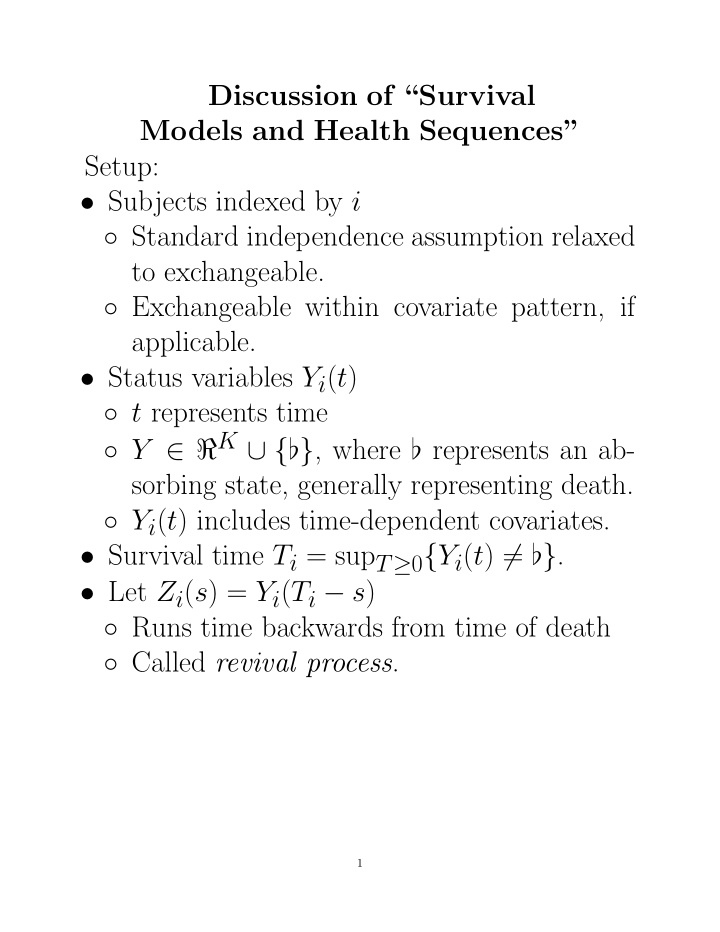



Discussion of “Survival Models and Health Sequences” Setup: • Subjects indexed by i ◦ Standard independence assumption relaxed to exchangeable. ◦ Exchangeable within covariate pattern, if applicable. • Status variables Y i ( t ) ◦ t represents time ◦ Y ∈ ℜ K ∪ { ♭ } , where ♭ represents an ab- sorbing state, generally representing death. ◦ Y i ( t ) includes time-dependent covariates. • Survival time T i = sup T ≥ 0 { Y i ( t ) � = ♭ } . • Let Z i ( s ) = Y i ( T i − s ) ◦ Runs time backwards from time of death ◦ Called revival process . 1
Objective Model Z i ( s ) • Look for pattern in E [ Z i ( s )] predicting death ◦ Model Z i ( s ) as a Gaussian process 2
Key Observation Z i ( s ) should be independent of T i • Assumption is called revival assumption . • Heuristically, time reversal captures all depen- dence of Y on T • Survival processes are aligned at failure time, rather than at randomization ◦ Avoids extra variability induced by hetero- geneity in disease stage at enrollment. 3
Place of common survival analysis concepts in revival framework • Treatment: modeled as time-dependent ◦ In this framework the only change is at ran- domization. ◦ Assume value of Z depends on treatment only through current treatment arm • Censoring: Stratify based on whether censor- ing has occurred. ◦ Pattern of interest should be apparent in the uncensored individuals ◦ Pattern should be attenuated in censored individuals 4
Open Questions • Can we use the information in censored ob- servations more intensively? ◦ If one reverses at censoring times, the expec- tation of covariates should be a mixture of the expectations for observations near fail- ure, and less extreme observations. ◦ Can we model this? 5
Recommend
More recommend